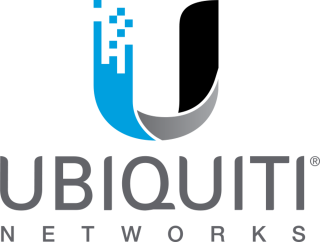In today’s fast-evolving digital landscape, the adoption of cloud computing has become pivotal for businesses seeking scalability, flexibility, and innovation. However, with great power comes great responsibility, and cloud governance emerges as a crucial strategy to steer this formidable asset. Effective cloud governance ensures operational excellence, reliability, and cost-efficiency while enabling organizations to manage risk effectively in their cloud ecosystems. As you embark on or refine your cloud journey, understanding the principles of cloud governance and implementing best practices is essential to leverage the cloud’s full potential without succumbing to its complexities.
This article will guide you through the necessary steps to establish a robust cloud governance framework, underscoring the importance of securing your cloud environment, monitoring and optimizing cloud operations, and managing budgets diligently. By invoking strategies that enhance reliability and operational excellence, you can navigate the complexities of cloud governance with confidence. The forthcoming sections aim to provide a comprehensive outline to help you implement pragmatic cloud governance measures, ensuring that you not only meet your organizational objectives but also sustain growth and innovation in a secure, compliant, and efficient cloud environment.
Understanding Cloud Governance
Definition and Importance
Cloud governance is the process of defining, implementing, and monitoring a framework of policies that guides an organization’s cloud operations. This governance is crucial for regulating how users engage with cloud environments, ensuring consistent performance and security across cloud services and systems. By establishing a structured approach through cloud governance, organizations can significantly improve oversight and control over critical areas such as data management, security, risk management, and cost management.
Core Components
A robust cloud governance framework typically evolves from existing IT practices, although it may sometimes necessitate the development of new rules and policies specifically tailored for the cloud. The core components of effective cloud governance include:
- Policy Development and Implementation: Creating and enforcing policies that govern the use of cloud resources to ensure operational efficiency and compliance with internal and external regulations.
- Risk Management: Identifying, assessing, and mitigating risks associated with cloud computing, including data breaches and system vulnerabilities.
- Cost Management: Implementing strategies to monitor and control spending to prevent budget overruns and ensure cost-effective use of cloud resources.
- Security and Compliance: Establishing stringent security protocols and compliance measures to protect data and adhere to legal and regulatory requirements.
- Performance Monitoring: Continuously monitoring the performance of cloud services to eliminate productivity bottlenecks and optimize resource utilization.
By focusing on these core components, organizations can harness the benefits of cloud computing while minimizing potential risks and ensuring a secure, compliant, and efficient cloud environment.
Establishing a Cloud Governance Framework
To effectively establish a cloud governance framework, it’s crucial to define and document clear policies and assemble a dedicated governance team. This ensures that your organization can manage cloud resources responsibly and efficiently, mitigating risks while supporting business objectives.
Setting Policies and Roles
- Policy Development:
- Begin by defining cloud governance policies that outline permissible actions and restrictions within your cloud environment. These policies should address each risk identified in your risk assessment and be designed to minimize the need for frequent updates.
- Ensure that these policies are not workload-specific but are applicable across different cloud scenarios within your organization. This broad applicability helps in maintaining consistency and control as your cloud environment scales.
- Role Assignment:
- Utilize a RACI (Responsible, Accountable, Consulted, Informed) matrix to clearly delineate roles and responsibilities for cloud governance. This matrix should cover various domains such as security, compliance, and cost management.
- Assign clear roles to stakeholders including cloud architects, engineers, administrators, users, and auditors. Establish expectations and limitations for each role to ensure clarity and accountability.
- Access and Adherence:
- Provide access to cloud governance policies to everyone who needs them within your organization. Implement strategies to simplify adherence, making it easier for team members to comply with the established guidelines.
- Regularly assess and update the policies to align with evolving business needs, technological advancements, and regulatory changes.
Creating a Governance Team
- Team Formation:
- Establish a cloud governance team responsible for overseeing the implementation of cloud governance policies. This team should be composed of members from diverse organizational backgrounds such as IT, security, finance, and operations to ensure comprehensive coverage of all cloud-related aspects.
- Opt for a small, agile team to facilitate quick decision-making and effective management of cloud governance tasks.
- Empowerment and Authority:
- Secure executive sponsorship for the cloud governance team to ensure they have the necessary authority and resources. This sponsorship is crucial for aligning cloud governance with overall business objectives and for supporting the team in policy enforcement and risk management.
- Define the scope of the team’s responsibilities clearly, avoiding overlap with other teams. For hybrid environments, specify distinct responsibilities to prevent conflicts between cloud-based and on-premise governance structures.
- Ongoing Engagement:
- Keep the cloud governance team engaged with other stakeholders through regular meetings and updates. This helps in maintaining alignment with the organization’s cloud adoption strategy and in managing emerging risks effectively.
- Implement a structured review process for the governance framework to adapt to new challenges and opportunities as the organization’s cloud landscape evolves.
By following these guidelines, you can establish a robust cloud governance framework that supports secure, compliant, and efficient cloud operations, aligning with your organization’s strategic goals.
Implementing Cloud Security Measures
Data Protection
To safeguard your data in the cloud, it’s crucial to understand not only what data you possess but also where it is stored and how it is managed. Effective data protection starts with robust encryption practices, ensuring that data is encrypted both at rest and in transit. This is vital for preventing unauthorized access and ensuring that your data remains secure even if intercepted. Additionally, implementing strong access controls is essential. You should limit access to sensitive data to only those who need it to perform their duties, thereby minimizing the risk of data breaches.
Furthermore, consider the use of advanced monitoring tools that provide real-time insights into your cloud environment. These tools can detect unusual activity that may indicate a security threat, enabling you to respond swiftly and effectively. Regular backups and the use of redundant systems are also critical to ensure that you can quickly recover from data loss events and maintain business continuity.
Compliance Requirements
Complying with regulatory standards is a fundamental aspect of cloud security. Whether you’re dealing with HIPAA in healthcare, GDPR for European data protection, or PCI DSS for payment data, each regulation requires specific measures to ensure data security and privacy. It’s essential to understand the specific compliance requirements relevant to your industry and to implement policies and technologies that address these needs.
Cloud Service Providers (CSPs) play a crucial role in compliance by offering built-in tools and configurations that help meet various regulatory standards. However, it’s important to recognize the shared responsibility model in cloud computing—while CSPs are responsible for the security of the cloud infrastructure, you are responsible for securing the data you put in the cloud.
To enhance compliance, adopt frameworks such as the Cloud Security Alliance’s Cloud Controls Matrix (CCM), ISO 27001, or NIST Special Publication 800-53. These frameworks provide comprehensive guidelines and best practices for managing cloud security risks and ensuring compliance. Regular audits and certifications are also vital to demonstrate adherence to these standards and to maintain trust with your clients and stakeholders.
By focusing on both robust data protection strategies and stringent compliance measures, you can create a secure and compliant cloud environment that supports your business objectives while protecting sensitive information.
Monitoring and Optimizing Cloud Operations
To effectively monitor and optimize cloud operations, it’s essential to implement robust mechanisms for both cost management and performance tracking. These practices ensure that your cloud environment not only adheres to governance policies but also operates efficiently and cost-effectively.
Cost Management
- Establish a Compliance Baseline: Begin by evaluating how compliant your cloud environment is with your governance policies, and use this assessment as your baseline. Regularly track your progress against this baseline to identify areas of non-compliance and make necessary adjustments.
- Implement Monitoring Solutions: Utilize tools that offer real-time monitoring capabilities to track compliance with your cloud governance policies. These tools should allow visibility into the teams enforcing compliance, enabling quick remediation of any issues.
- Analyze Cloud Costs: Conduct detailed cost analyses to gain full visibility into your cloud expenditures. This will help you understand where your budget is being spent and identify any inefficiencies.
- Create and Monitor Budgets: Establish budgets that align with your cloud strategy and monitor them to ensure spending stays on track. Use cost optimization recommendations to guide your budgeting process.
- Centralize Cost Management: Use platforms that consolidate cost management and monitoring, providing a single view of all cloud expenditures. This centralization helps in better tracking and managing of costs across different departments or teams.
Performance Tracking
- Monitor Resource Utilization: Regularly check the utilization rates of your cloud resources to ensure they are being used efficiently. Tools like Azure Advisor can be instrumental in monitoring for reliability, security, operational excellence, and cost optimization.
- Track Deployment and Response Times: Keep an eye on metrics such as average deployment and onboarding times. These indicators can help assess the operational efficiency and the agility of your cloud environment.
- Resource Health Monitoring: Continuously monitor the health of your cloud services. This includes keeping track of service-impacting events, planned maintenance, and any changes that might affect availability.
- Audit and Validate Compliance: Manually review compliance to ensure that all operations adhere to set governance policies. Regular audits help validate the effectiveness of your monitoring tools and strategies.
By focusing on these key areas within cost management and performance tracking, you can enhance the operational efficiency of your cloud operations, ensuring that your cloud investments deliver maximum value while staying aligned with your organizational goals.
Conclusion
Throughout this comprehensive guide, we’ve delved into the critical aspects of cloud governance, underscoring the importance of establishing a robust framework that ensures operational excellence, compliance, and cost-efficiency in cloud operations. From explaining the pivotal components of cloud governance, including policy development, risk management, and cost control, to laying out actionable strategies for securing cloud environments and optimizing performance, the insights provided aim to empower organizations to navigate the complexities of cloud computing confidently. This journey reinforces the indispensable role of cloud governance in scaling businesses innovatively and securely in the digital age.
As we conclude, it is clear that implementing the best practices and strategies discussed will not only safeguard your organization’s cloud assets but also enhance its overall efficiency and effectiveness. Embracing a proactive stance on cloud governance by continuously monitoring, evaluating, and adapting policies and procedures ensures that your organization remains agile, secure, and compliant amidst the ever-evolving technological landscape. By recognizing the significance of these principles and taking steps to integrate them into your cloud governance framework, your organization is well-positioned to harness the transformative power of cloud computing while mitigating potential risks and challenges.
FAQs
1. What are the core disciplines involved in cloud governance?
Cloud governance encompasses five key disciplines that should be aligned with your corporate policy. These are Cost Management, Security Baseline Discipline, Resource Consistency Discipline, Identity Baseline Discipline, and Deployment Acceleration Discipline.
2. How is a cloud governance strategy defined?
A cloud governance strategy refers to a framework comprising rules and policies implemented by organizations operating in the cloud. This strategy ensures the proper management of data security, system integration, and cloud computing deployments.
3. What are crucial factors to consider in cloud governance?
Key considerations in cloud governance include Financial Management to control costs, Operations Management, Data Management, Compliance and Security Management. Additionally, it is important to automate processes, adopt cloud-specific security measures, manage user access, and continuously monitor the cloud environment.
4. What are the fundamental principles of cloud governance?
The principles of cloud governance consist of six main areas: security, compliance, data management, cost optimization, operational efficiency, asset management, and performance management. These principles help in maintaining an effective governance framework in cloud environments.










